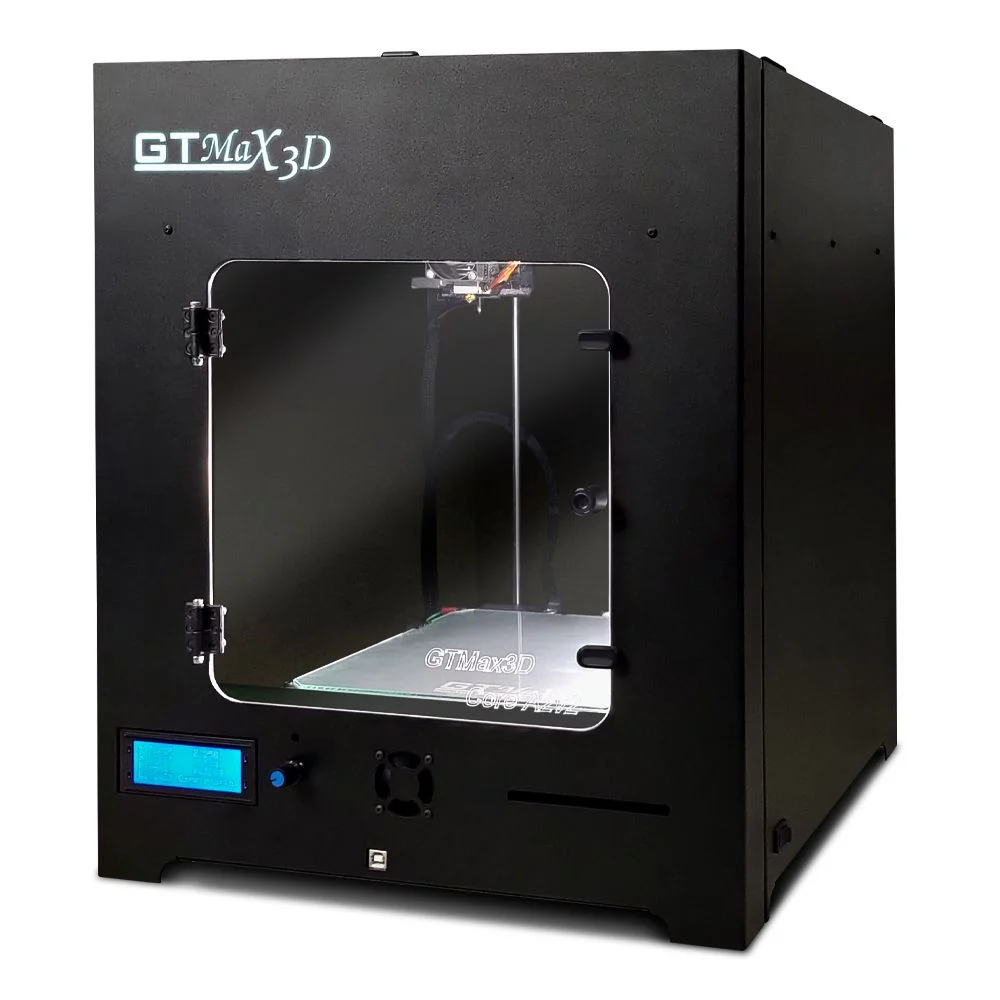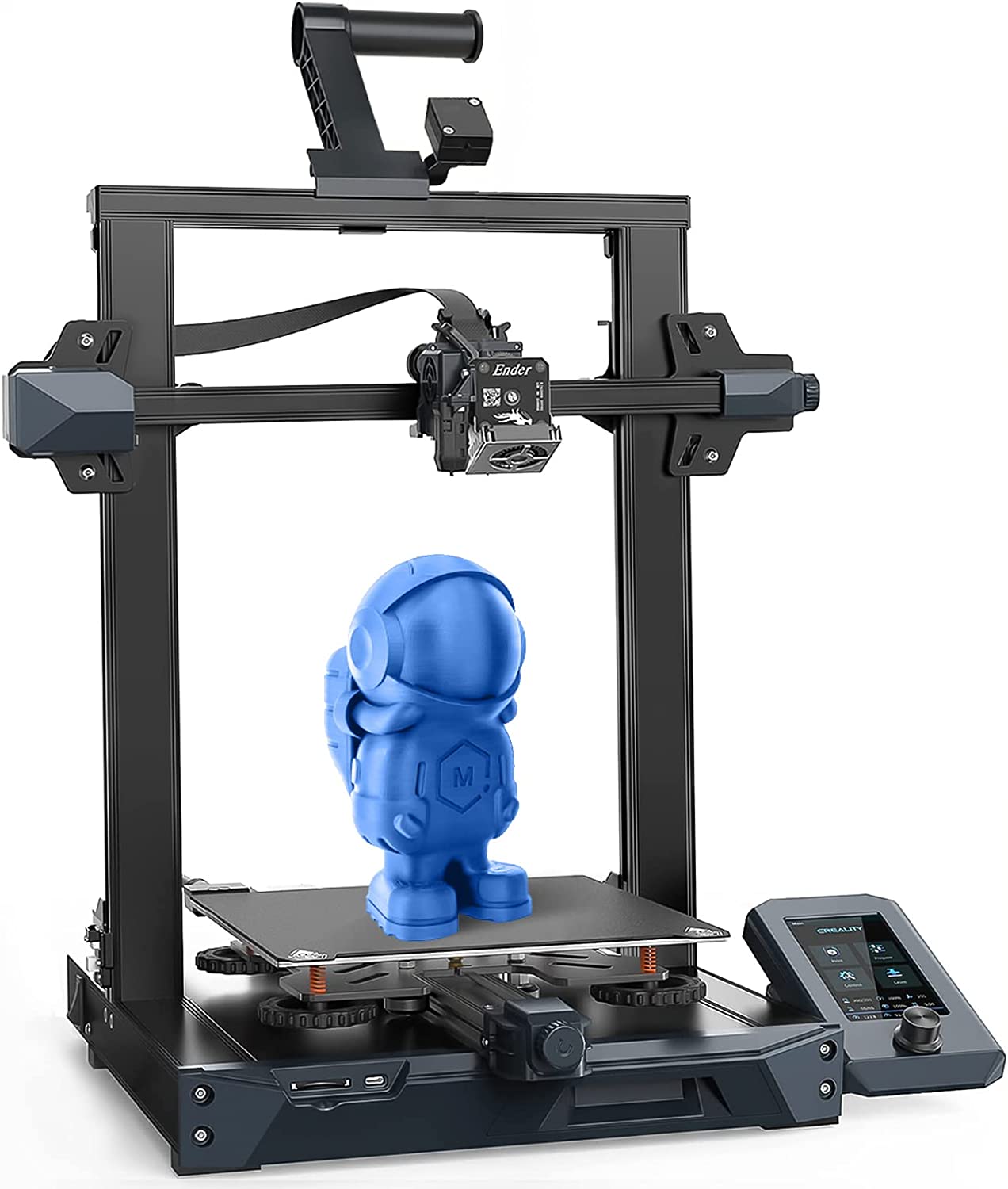Compare Core A2V2 vs Ender 3 S1
Comparison between the best 3D printers
Choose the best 3D printer at the best price. The cheapest 3D printers are here.
Buy a 3D printer here with 3D Fila.
 |
 |
|
| Model | Core A2V2 |
Ender 3 S1[BUY Ender 3 S1] |
| Printing Material | Filament | Filament |
| Buy Filament for GTMax Core A2V2 | Buy Filament forCreality 3D Ender 3 S1 | |
| Estimated price | $684,00 | $399,00 |
| Manufacturer | GTMax | Creality 3D |
| Release Year | 2019 | 2021 |
| Print Volume [mm] | 220x220x240 | 220x220x270 |
| Printer Size [mm] | 425x460x512 | 455x490x625 |
| Weight [kg] | 9,1 | |
| Power Loss Recovery | YES | YES |
| Enclosed printer | YES | NO |
| Bed Leveling | Automatic | |
| Filament End Sensor | YES | YES |
| Bed type | Heated | Heated |
| Power supply system | Bowden | Direct Drive |
| Standard nozzle | 0,4 | 0,4 |
| Maximum Nozzle Temperature [°C] | 295 | 260 |
| Maximum Bed Temperature [°C] | 135 | 100 |
| Maximum printing speed [mm/s] | 150 | 180 |
| Filament holder | YES | YES |
| Camera for supervision | NO | NO |
| Recommended filaments | PLA, PETG, Tritan, Flex, ABS | PLA, TPU, PETG, ABS |
| Recommended slicers | Cura, Simplify, Slic3r, IdeaMaker | Cura, Simplify, Slic3r, IdeaMaker, Creality Slicer e outros |
| Maximum Resolution [mm] | 0,05 | 0,05 |
| Processor | ||
| Display | Mono | Display 4,3'' |
| Power Supply | ||
| Connectivity | SD / USB | SD / USB |
| Operating systems | Windows, Mac, Linux | Windows, Mac, Linux |
| Date of registration in the system | 2022-11-12 | 2023-03-28 |
| Release date | 2019 | 2021 |
| Extra features | The GTMax3D ProCore A2v2 is a compact and robust 3D printer with a printing area of ??220 x 220 x 240 mm. It offers high print quality, ranging from 0.05 mm to 0.32 mm. Its features include automatic filament detection and changing, travel speed of up to 300 mm/s, and a heated aluminum bed with a glass top. It has automatic bed leveling with 16 points and an all-metal hotend that reaches up to 298°C. The printer has a carbon steel frame with electrostatic painting, is automatic bivolt and has connectivity via USB and SD card. The Bowden system and core xy kinematics complete its advanced features. | The Creality Ender 3 S1 printer stands out for its easy assembly and quiet operation. It has automatic bed leveling and a direct drive system, providing high-quality prints. The design is sleek, with flat cables in mesh sleeves and a magnetic bed. The Creality Sprite extruder is lightweight and developed in-house, supporting a maximum nozzle temperature of 260 degrees. It includes a filament run-out sensor and power loss recovery, with a dual Z-axis for greater support and stability. The build plate is flexible steel with PC coating, and the printer supports a wide variety of filaments. |
| Support for multiple colors and materials (AMS and CFS) | NO | NO |
Notes * |
||
| Cost-benefit | 6 / 10 | 7 / 10 |
| Hardware | 2.5 / 10 | 2 / 10 |
| Tela | . | . |
| Print volume | 3 / 10 | 3 / 10 |
| Performance | 1 / 10 | 1 / 10 |
| [BUY Ender 3 S1] |
Conclusion |
| In comparing the Core A2V2 and the Ender 3 S1, several factors come into play beyond just the pricing. The Core A2V2 is a robust machine with a strong focus on print quality and advanced features, such as automatic bed leveling and a high maximum nozzle temperature. This printer is enclosed, making it suitable for printing with a broader range of materials that might require temperature stability. It also boasts a compact design and a heated aluminum bed, which further enhances its capabilities. However, its higher price reflects these advantages, marking it as a more significant investment. The Ender 3 S1, while not enclosed, offers impressive features like a direct drive system and a larger print volume. Its design emphasizes ease of assembly and quiet operation, making it user-friendly. With a wide range of compatibility for filaments, it serves as an excellent choice for both beginners and intermediate users. The Ender 3 S1 strikes a balance between performance and affordability, providing good value for those looking for reliability without breaking the bank. In conclusion, if budget constraints are a critical factor and you’re looking for a reliable yet versatile option, the Ender 3 S1 stands out as the better choice due to its more affordable price and practical features. However, for those who prioritize advanced capabilities and the ability to print with more specialized materials—perhaps at the expense of cost—the Core A2V2 is the stronger contender. Ultimately, the decision depends on your specific needs and intended use case in 3D printing. |

